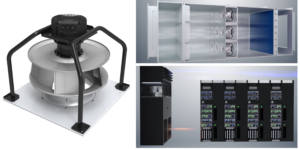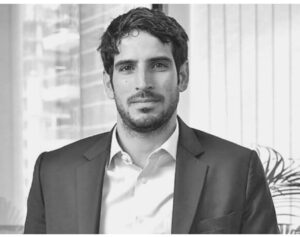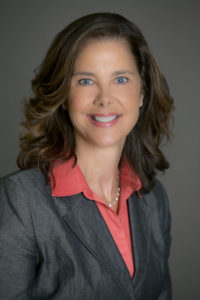Dunli launches B-Max backward-curved centrifugal fan
Hangzhou, Zhejiang, China, 27 July, 2021: Dunli has launched the B-Max backward-curved centrifugal fan, which the company said is developed for high-end HVAC unit applications. Making the announcement through a Press release, the company added that the impeller, motor and controller of the fan were designed afresh to bring customers a better experience.

Describing the characteristics of the fan, Dunli said it:
- Is a one-piece solution, where the motor, impeller, inlet ring, supporting rack and mounting plate are matched and assembled perfectly into one piece. This feature, it added, enables ease of assembly for the customer.
- Has excellent efficiency, including industry-leading static pressure efficiency, which meets ErP2020 Standard requirements; an aerodynamic efficiency as high as 75% and above; and EC motor efficiency that meets IE4 standard.
- Has an optimised aerodynamic airfoil-shaped blade design through using CFD technology; and industry-leading noise level. These two features, it added, are the outcome of 40+ reliability tests that were performed.
- Has various control functions, including 0-10VDC (15VDC)/PWM signal control; phase-missing, over-current, over-voltage, over-temperature protections and signal control and fault alarm functions; and 485 communication function with MODBUS-RTU interface to monitor working, stop, speed and malfunction of the motor status.
- Has wide range of applications, wherein it can be widely used in AHUs, data centres and precision air conditioning
Dunli launches X-Pro axial fans
Yuhang District, Hangzhou, Zhejiang, China 3 May 2021: Dunli has launched the X-Pro series of axial fans, which the company described in a Press release as designed to feature the latest rear guide vane and three-dimensional flow impeller.
The range covers a variety of impeller diameters, including 500mm, 630mm, 710mm, 800mm and 900mm, Dunli said. The maximum static pressure efficiency is up to 56%, and the air volume is as high as 35,000m3/h, the company claimed. The noise and range – throw distance – are able to perform significantly better than the equivalent fans from the motor fan industry all over the world, the company further claimed.
According to Dunli, the X-Pro fans can be used on a variety of HVAC equipment, such as air coolers, air-cooled heat exchange modules, heat pumps and cooling towers. This X-Pro series, Dunli said, is reliable, lends itself to easy installation and maintenance and is convenient to control.
AESG in global expansion drive with 45% growth target for 2021

Saeed Al Abbar
Dubai, UAE, 06 January 2021: Consultancy, engineering and advisory firm, AESG announced the appointment of global directors for each of its lines of business, as well as the expansion of the role of the company co-founder, Saeed Al Abbar, to group-wide CEO. Making the announcement through a Press release, the firm said the move follows the establishment of offices in the UAE, Saudi Arabia and the United Kingdom, and successful delivery of large-scale projects across the Middle East, Europe and Asia. The consolidation of service teams under unified global divisions, AESG said, will enable it to deploy the best skills and resources from all its international offices on projects worldwide.
Outlining how this strategy bolsters the company’s ambitious plans for the upcoming year, Al Abbar said: “2021 is set to be a significant growth year for AESG, as we build on the momentum we have established. While the Middle East will remain a focal market for us, we are also seeing steady growth in our business in the UK and Europe, as well as a surge in opportunities in Asia. Our reorganization perfectly positions us to capitalize on these opportunities, as we draw on the brightest and most qualified talent from each market to drive our success across the vast geography of our operations.”

Phillipa Grant
AESG said that under the direction of its newly appointed global directors it is looking to further grow its teams. The company said it has budgeted for a 45% increase in headcount, with the objective of scaling to 140 professionals through 2021. The company also revealed its intention to replicate in Asia the strategy that has proven highly successful in the Middle East and Europe by establishing a regional headquarters in Singapore.
AESG said its newly appointed global directors will be tasked with leading teams, driving the growth of their service lines and ensuring best practices are implemented across regions. Two AESG Global Directors have been promoted from within the company, with Phillipa Grant and Nivine Issa now taking on the roles of Global Director of Sustainability and Global Director of Environment, respectively. Grant and Issa have also taken up equity partnership in the firm, demonstrating their long-term commitment to AESG and highlighting the company’s leadership in gender equality in the field.

Nivine Issa
With its appointment of Peter Downer to the position of Global Director of Fire and Life Safety, AESG said it is also looking to draw from the experience and expertise of a business leader who has worked with large multinational construction consultancy firms. An industry veteran of over 35 years – 15 of which have been in senior leadership positions – Downer has worked extensively on projects across the Middle East, Asia and Australia, AESG said. Prior to joining AESG, he served as the Senior VP at Jensen Hughes, where he led the Asia region, which included offices in China, Malaysia, Korea, Singapore, Hong Kong and Macau.

Peter Downer
Al Abbar said: “AESG has successfully navigated the challenges of 2020, and as developers look to enhance and optimize the efficiency, sustainability, safety and manageability of their investments, our comprehensive portfolio of specialist services is now more relevant than ever. We maintain a highly optimistic outlook with confidence that our commitment to maintaining service excellence through our ongoing expansion will further validate our position as a leading global consultancy firm.”
Deciphering the dynamics of The Water Hub
Could you highlight how the drought situation drove Emory to develop The Water Hub?
The Water Hub was a concept my colleagues learnt about at a conference approximately 8-9 years ago. At the time, the technology was deployed in Europe but not in the United States. At the time, even Atlanta was going through heavy drought, and so we pursued the technology, which was put through various capital-funding concepts. Initially, a third-party actually funded, maintained and operated the facility. The water extracts were redistributed through the plants, and the contract was eventually signed in 2013, after which the facility came online in early 2015. In addition, the wastewater treated at the plant meets very high cleanliness standards – so much so that the water can be released back into the creek.
The Water Hub meets almost 100% of the water requirements of the campus’ utility systems, including Emory’s chilled water plants and the central campus steam plant, which provide cooling and heating to over 70 buildings. What is the capacity of the District Energy plants?
The Water Hub can clean up to 400,000 gallons of water per day, and we maximise the volume during our summer cooling period. We have around 20,000-25,000 tonnes of cooling capacity, so we are able to make up the cooling capacity with the volume of water.
The Water Hub, as we understand it, provides a low-energy, high-efficiency cleaning process through filtration, circulation through natural earth and plant bioreactors, and exposure to ultraviolet light and chlorination. How much is the energy cost?
In the locale where we are, our water is sent downstream to a very large water treatment plant, where it would be treated, redistributed and then pumped back into the system. Similar to power and when you have energy-redistributed resources, so we have to pump and process close to where the demand is and we don’t have the distribution losses or the energy needed to pump the clean water back to us or to pump the waste down to the treatment plant. So, the numbers aren’t as transparent as we’d like them to be, but we do know that it is saving energy, because we are only pumping it within our campus.
Could you elaborate on the challenges with regard to achieving operational efficiencies?
One of the things we found out early on was that there are a lot of different things in the sanitary waste stream. We found that one of the research departments was dumping animal beddings into the sewer system, and it was creating problems at the pump intakes. As a result, they had to keep cleaning the pumps and pulling them out. We then asked them to compost the animal beddings, which was a better way to dispose them. It has really given us a crude understanding of what’s in the system, and presently we have an issue where they have found baby wipes in the system. This is a major challenge in terms of what’s plugging the intakes. When you are not in the business, you don’t think about these things. We did not anticipate all this, and now we have installed filtering devices on the front end.
How were you able to reduce carbon emissions with regard to water use on campus?
Well, I think it goes back to discharging and reusing our own water. Now, we are not relying on pumping water from a distance. We also installed solar panels at the facility, so they are helping set the electrical use at the water plant.

Joan Kowal, Senior Director, Energy & Utilities, Emory University
Does the water need to be polished before deploying it as makeup water for the campus chilled-water system?
We have polishers at our steam plant, but we don’t have them at our cooling towers. However, we did have to modify our chemical treatment programme at the cooling towers. Modify in the sense that the original chemistry was based on the quality of the water. So, we had to reduce some and add others, while adjusting the menu of chemicals used.
What happens to the blowdown water? Where does it go?
When water is brought to the cooling tower, it rejects the heat from the chilled water system, and as you reject the heat you see a steam mist coming from the top. The evaporation of water causes a concentrated mix of chemicals left in the basin of the cooling tower. When the chemicals concentrate and get to a point that is high, you then have to get the valve and blow down the water. It is then closed and refilled with non-chemically treated water. We operate in 7-8 cycles of blowing down water, which then goes back to the Hub and mingles with the rest of the water. The rest goes back out to a different part of the sanitary system.
What has been the overall response to The Water Hub? Also, are there any additional challenges with regard to odour?
There are people interested who want to replicate what we have. We were very stringent with our developer, when it comes to smell. There shouldn’t be an odour, and it is located right near residential facilities and offices. The technology we use is such that you don’t have the build-up of gases to create the smell.


